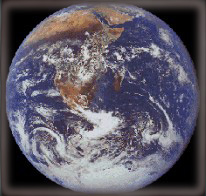
Ioannina, Greece -October 2006
EUTROPHICATION IN LAKES AND MEASUREMENT OF SOME PHYSICOCHEMICAL PARAMETERS
By Stergios Nastopoulos, teacher of Physics,MSc in the 8th Unified Lyceum of Ioannina, English tranlation by Mr. Maria Tsougla, teacher of English in the same Lyceum.
Trophic States
Terms oligotrophic ("little food") and eutrophic ("well fed") were first used to describe soil fertility in northern Germany around 1905
This trophic classification of lakes was first developed largely on the basis of benthic invertebrates present in the deep water sediments. Some species were found to be more sensitive to low oxygen than others. This in turn could be related to classification as oligotrophic, mesotrophic, and eutrophic. Note that as originally proposed, only oligotrophic and eutrophic were defined.
1. OLIGOTROPHIC LAKES - tend to be deep with mean depths > 15 m and maximum depths > 25 m. Waters are transparent and have low density of plant life occurring at various depths. Nutrient supply is low in relation to the volume of water and dominant fish tend to be coldwater species such as lake trout.
2. EUTROPHIC LAKES - are shallow with mean depths < 10 m and maximum depths < 50 m, have high nutrient supply in relation to volume and dense growths of plankton in the surface waters. Water column is turbid and biological productivity is high at all levels. Dominant fish tend to be warm water.
3. MESOTROPHIC LAKES - a convenient term for lakes that are borderline between oligotrophic and eutrophic. They are intermediate with respect to nutrient supply, depth, biological productivity, water clarity, and oxygen depletion in the hypolimnion
|
Lectures


© 2003-06 The Blue Planet Project Comenius team. Information:The Webmaster Stergios Nastopoulos

Hits so far:











